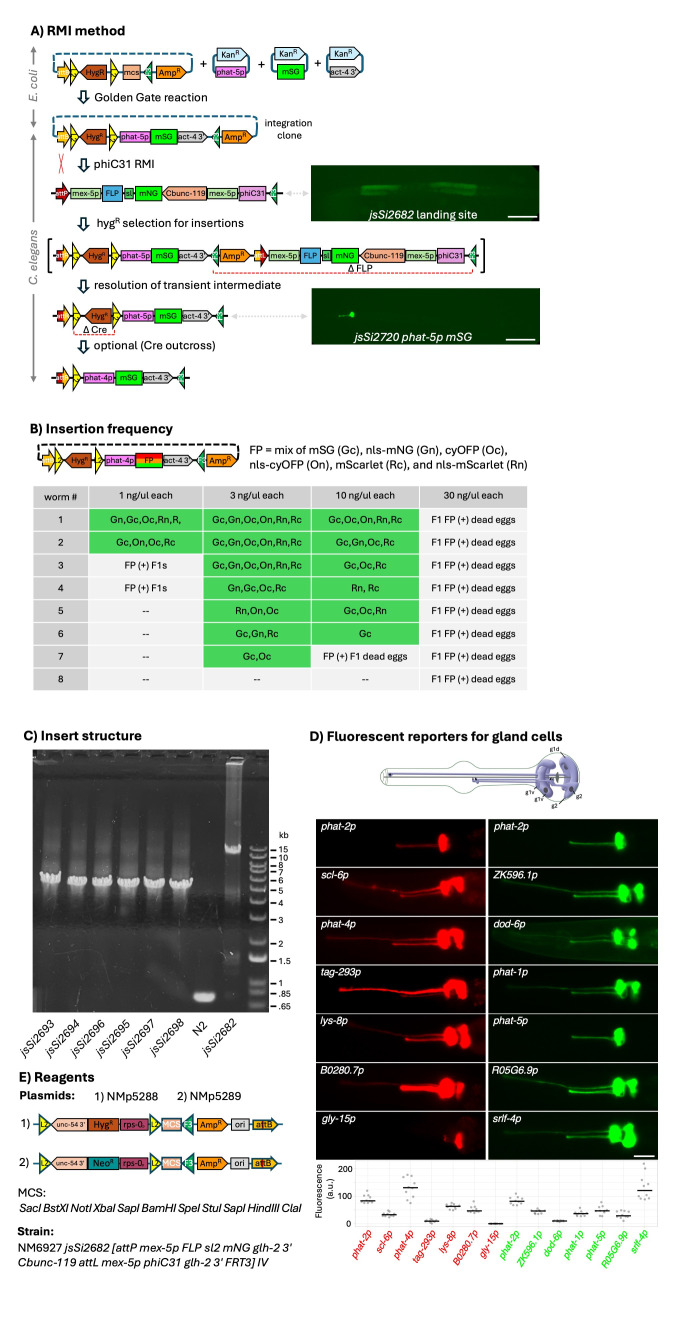A single component landing site for efficient transgenesis using recombination-mediated insertion.
microPublication biology
Pub Date : 2025-09-02
eCollection Date: 2025-01-01
DOI:10.17912/micropub.biology.001784
引用次数: 0
Abstract
Recombination-mediated insertion (RMI) is a recently developed method for creating C. elegans transgenes using phiC31-mediated recombination. RMI was developed as a two-component approach that relies on an att landing site and an unlinked source of phiC31 and FLP recombinases. Here, we describe both a landing site that incorporates the recombinase cassette and matching targeting vectors. The new landing site is located at a well-vetted MosSCI insertion on Chr IV and injections of single animals typically yield multiple independent insertions. We document the utility of this RMI landing site by creating 14 fluorescent reporters for pharyngeal gland cells.

利用重组介导插入高效转基因的单组分着陆点。
重组介导插入(RMI)是最近发展起来的一种利用phic31介导重组构建秀丽隐杆线虫转基因的方法。RMI是一种双组分方法,它依赖于一个att着陆点和一个phiC31和FLP重组酶的非连锁来源。在这里,我们描述了包含重组酶盒和匹配靶向载体的着陆点。新的着陆点位于Chr IV上经过严格审查的MosSCI插入点,单个动物的注射通常会产生多个独立的插入点。我们通过创建14个咽腺细胞荧光报告基因来记录这个RMI着陆点的效用。
本文章由计算机程序翻译,如有差异,请以英文原文为准。
求助全文
约1分钟内获得全文
求助全文

 求助内容:
求助内容: 应助结果提醒方式:
应助结果提醒方式:


